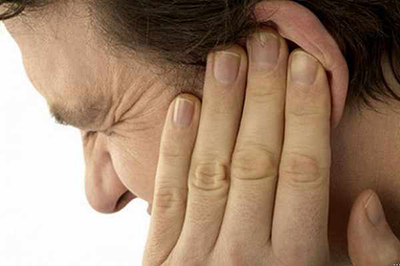
Source: standardfirstaidtraining.com
Most of us will encounter a strange feeling in the ear during flights. Some will hear less, some experience their ears popping and an unfortunate few will suffer excruciating pain. On a personal note, I have also suffered this once. I felt someone was poking my eardrum with a sharpened pencil throughout the entire 90 minutes flight!
To explain this, first we have to understand the basic anatomy of the ear. The nose is connected to the ear via a small connection called the Eustachian tube. There, pressure in the ear is regulated to be equal to the surrounding atmospheric pressure. By chewing, yawning, swallowing or blowing balloon, we are automatically equalizing the pressure. When there is a pressure change, the ears need to equalize the pressure- otherwise; there will be reduced hearing, tinnitus (ringing sound in the ear) and sometimes pain.
We usually experience pressure change while ascending to higher altitude or descending while diving underwater. We also need to equalize sometimes while having a runny nose. Conditions such as cleft palate or cancer of the nasopharynx will disrupt normal function of the Eustachian tube, thus similar problem will be present.
How can we reduce the sensation of not equalizing the pressure during flight?
- Stay awake during take-off and landings. Pressure change is the greatest during these 2 periods.
- Chew or swallow something during flights. Chewing gum or sweets, and yawning will help too, especially if you have an irritable travel companion.
- Take plenty of fluids, preferably plain water. Reason being, it promotes swallowing and secondly it hydrates you. The cabin air is dry, therefore dries up your nose secretion and subsequently blocks the Eustachian tube.
- Use Vasalva maneuverer. This is a technique described as blowing out your breath into a pinched nostril and a closed mouth. You can do this anytime you feel discomfort in the ear, and especially on landing. Careful not to blow excessively hard as it may damage your Eustachian tube and ear drum.
- Use nasal decongestant. This should be prescribed by a doctor, preferably an ENT doctor, as not everyone can use it and it cannot be taken continuously for more than 5 days.
- If possible, reschedule your flight if you are having an upper respiratory tract infection. I learned that the hard way, as mentioned in first paragraph. Infection of the nose reduces your ability to equalize the pressure and therefore increases the likelihood of you having severe ear pain.
How about children?
If they are of older age and able to obey instructions, similar methods as above can be used. Younger children may follow the steps below:
- Time the feeding if possible so that they eat or drink during take-off and landing. As mentioned, these are the periods where maximum change of pressure takes effect and the most essential time to equalize.
- If they refuse to feed, they need to chew or suck. Infants and toddlers can breastfeed, bottle feed or suck on pacifier. Older children can be given sweets or candy. Of course, for some parents, caution need to be taken while handing out sugary food to their kids, as this could lead to their kids having sugar high episodes. The sugar high episodes could cause temporary hyperactivity and leaving the parents in embarrassment during the entire flight! Personal experience dealing with kids on sugar rush myself.
- Take analgesia (painkiller) half an hour before flight if you are having upper respiratory tract infection. This alleviates the pain you may experience once the pressure builds up.
Some authors recommend putting eardrops for numbing the eardrum. However, there is no such ear drop available in our country. The existing ear formula for local anaesthetic effect is in cream form and not able to be applied by layman without proper instruments and devices.
Some websites also recommend ear plugs. It is quite difficult to find a suitable ear plug which fits snugly into your ear canals. Also, it is rather uncomfortable and more expensive compared to previous methods.
Hoping you and your children will fly free from ear pain after reading this. Flying free will be another story.
Dr Ahmad Nordin is an Ear Nose and Throat surgeon currently working in Sabah. Find out more about him on The Team page.
[This article belongs to The Malaysian Medical Gazette. Any republication (online or offline) without written permission from The Malaysian Medical Gazette is prohibited.]
References:
- KJ Lee Essential Otolaryngology and Head and Neck Surgery 3rd Edition
- http://www.mayoclinic.com/health/airplane-ear/DS00472/DSECTION=prevention accessed on 27 December 2013
- http://www.webmd.com/parenting/baby/features/flying-with-baby-is-air-travel-safe-infants accessed on 27 December 2013
- http://kidshealth.org/parent/general/eyes/flying_ears.html accessed on 27 December 2013

I suffered from deafness on my right side of the ear. My doctor told me that being a frequent flyer ever since i was a baby cause this. Is it true?my eardrum was intact anyway. Can i get a proper treatment for this? Coz my dr said i need to lose both before i can be treated.
Dear Fatin,
I apologize for the delay in answering.
There are many causes of deafness. A thorough history taking & clinical examination by an ENT doctor will lead to possible clues, as the incident happened quite some time ago.
An audiometric assessment (hearing test) will further narrow down to either a conductive hearing loss or sensorineural hearing loss. With a certain degree of hearing loss or if the deafness is causing impairment to your working life or daily activity, you can be treated. There is no need to lose both ear hearing, otherwise it may be too late.
Please see an ENT doctor for proper assessment.